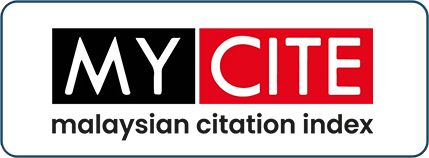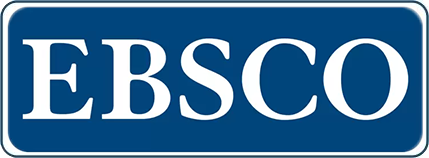The Understanding Towards The Ingredients Of The Imported Chocolates Without Jakim Halal Certification: A Survey From Food Experts And Opinion Leaders
DOI:
https://doi.org/10.33102/jfatwa.vol27no2-SE.486Keywords:
Halal, Imported chocolate, Food ingredients, Food experts, Opinion leadersAbstract
As customers become more knowledgeable of the halal product in terms of halal certification, halal regulations and halal raw ingredients, the availability of a variety of chocolate products is growing. This situation makes the consumers continue to have concerns about the quality, sanitation, and halal status of chocolate products, particularly the ingredients of the chocolate. The issue arises when the languages used on the packaging and labels of the imported chocolates cannot be understood by the consumer of importing country. In addition, there are a variety of ingredients from unknown sources that can be a threat to the halal status of imported chocolate. Thus, this research is conducted to assess the food experts and opinion leaders particularly from the Halal Management Unit Division of Sarawak Islamic Religion Department and Halal Industry Management, Academy of Contemporary Islamic Studies (ACIS), Universiti Teknologi MARA (UiTM) Shah Alam regarding their understanding of the halal status and ingredients of imported chocolates without Department of Islamic Development Malaysia (JAKIM) halal certification and the uncertainties associated with the products. The study adopts a quantitative method where the primary data were collected by surveying the food experts and opinion leaders. The collected data were analysed using descriptive analysis. The findings showed that the food experts and opinion leaders agreed that the list of the ingredients itself is not enough to reassure the consumers that the chocolate product without the halal logo is indeed halal as the processing of the chocolate includes the usage of several critical ingredients such as emulsifier, milk, fat and oil, flavouring and colouring.
Downloads
References
Akter, K., Khandaker, M., Abdul Aziz, M., Mahmud, S., Morshed, M.N., & Sala Uddin, G.M. (2021, March). Halal Food Safety: PCR Based Detection of Porcine DNA in Imported Chocolate. Asian Food Science, Journal, 20(3), 62-68.
Ambali, A.R., & Bakar, A.N. (2014, March). People's Awareness on Halal Foods and Products: Potential Issues for Policy-Makers. Procedia Social and Behavioral Sciences, 2014(121), 3-25,
Azam, M.S.E., & Abdullah, M.A. (2020, March). Global Halal Industry: Realities and Opportunities. International Journal of Islamic Business Ethics, 5(1), 47-56.
Azir, M., Abbasiliasi, S., Tengku Ibrahim, T.A., Manaf, Y.N., Sazili, A.Q., & Shuhaimi, M. (2017, November). Detection of Lard in Cocoa Butter—It’s Fatty Acid Composition, Triacylglycerol Profiles, and Thermal Characteristics. Multidisciplinary Digital Publishing Institute, 6(11), 1-12.
Damit, D.H.D., Harun, A., & Martin, D. (2017, December). Key Challenges and Issues Consumer Face in Consuming Halal Product. International Journal of Academic Research in Bussiness and Social Sciences, 7(11), 590-596.
Grumezescu, A.M., & Holban, A.M. (2017). Natural and artificial Flavouring Agents and Food Dyes. United Kingdom: Academic Press.
Gutiérrez, T.J. (2017, September). State of The Art Chocolate Manufacture: A Review. Comprehensive Reviews in Food Science and Food Safety, 16(6), 1-32.
Khattak, J.Z.K., Mir, A., Anwar, Z., Wahedi, H.M., Abbas, G., Khattak, H.Z.K., & Ismatullah, H. (2011, October). Concept of Halal Food and Biotechnology. Advance Journal of Food Science and Technology, 3(5), 385-389.
Malay Mail. (2019). Malaysia’s halal industry market value to reach RM614.36b by 2025. Retrieved from: https://www.malaymail.com/news/money/2019/12/07/malaysias-halal-industry-market-value-to-reach-rm614.36b-by-2025/1816900
Marikkar, N., & Manaf, Y.N. (2018, January). Fats, Oils and Emulsifiers. Preparation and Processing of Religious and Cultural Foods, 241-251.
Ngumbang, R. (2020, January). Food and Agricultural Import Regulations and Standards Country Report. United States Department of Agriculture, MY2019-0016, 4-14.
Quek, C.R.Y., Yi Peh, E.W., & Henry, C.J. (2020, April). Effects of Cocoa Butter Equivalent in a Chocolate Confectionery on Human Blood Triglycerides, Glucose and Insulin. Multidisciplinary Digital Publishing Institute, 9(4): 455, 1-10.
Suparman, S., Sri Rahayu, W., Sundhaniv, E., & Saputr, S.D. (2015, January). The Use of Fourier Transform Infrared Spectroscopy (FTIR) and Gas Chromatography-Mass Spectroscopy (GCMS) For Halal Authentication in Imported Chocolate with Various Variants. Journal of Food and Pharmaceutical Sciences, 6(11), 6-9.
Tisoncik, M.A. (2010, January). Impact of Emulsifiers on Physical, Sensory, and Microstructural Properties in Formulated Dark Chocolate with An Innovative Educational Approach. The University of Illinois, 1-39.
UN Comtrade Database. (2021, November). Malaysia: Imports and Exports World Chocolate, other food preparations containing cocoa; Value (US$) and Value Growth, YoY (%) 2009 – 2020. Retrieved from: https://trendeconomy.com/data/h2/Malaysia/1806
Wijayanti, R., A, W.P., & Sunaryo. (2020). The Effects Between Religious Belief, Halal Logo and Halal Product Knowledge on Purchase Intention Mediated by Halal Awareness (Study On Consumers of Beverages Franchise Products in Malang). South-East Asia Journal of Contemporary Business, Economics and Law, 21(5), 306-309.
Downloads
Published
Issue
Section
License
Copyright (c) 2022 Nadiah Ramlan, Nurul Atikah Aziemah, Noorul Huda Sahari

This work is licensed under a Creative Commons Attribution 4.0 International License.
The copyright of this article will be vested to author(s) and granted the journal right of first publication with the work simultaneously licensed under the Creative Commons Attribution 4.0 International (CC BY 4.0) license, unless otherwise stated.















